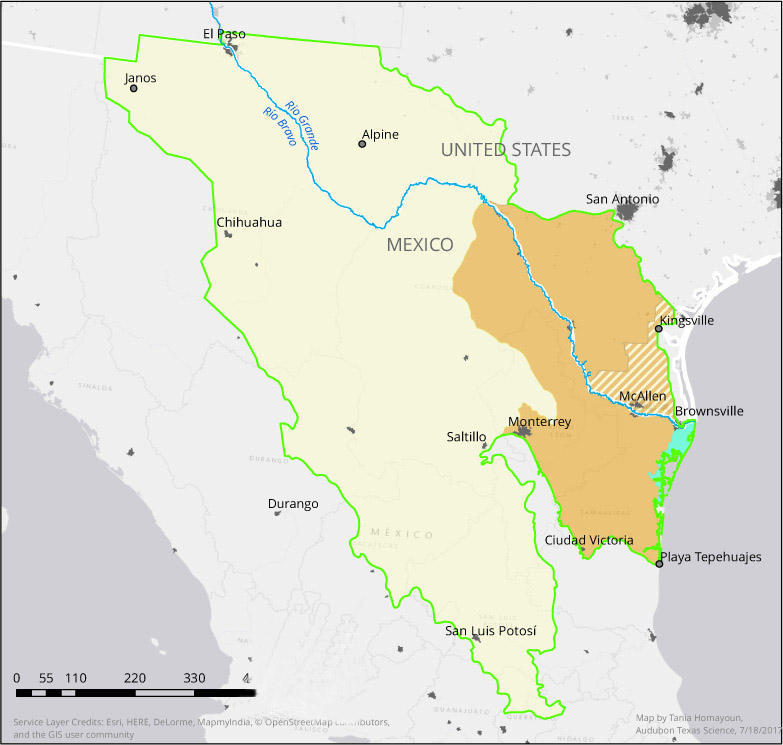A Partnership for Bird Conservation
The Rio Grande Joint Venture (RGJV) is a migratory bird conservation partnership of both public and private entities dedicated to conserving birds, their habitats, and the ecosystems that support wildlife and people across a large binational region (shown in the map below). The partnership is one of twenty-five Migratory Bird Joint Ventures that form a conservation network covering most of the continental U.S. and portions of Mexico and Canada.
Coordination, Structure, and Funding
The Rio Grande Joint Venture Management Board is made up of key representatives from state and federal natural resource agencies and non-governmental conservation organizations in the U.S. and Mexico. The Management Board provides overall leadership, guidance, resources, and support towards achieving bird and habitat conservation goals.
The logos below represent our Management Board members.
RGJV accomplishes its work through conservation planning, on-the-ground conservation delivery, and monitoring and research. RGJV convenes partners for planning purposes, forms ad-hoc technical committees and advisory groups, and gathers existing science and data to identify gaps and fill needs in priority conservation regions. Teams can include scientists, land managers, biologists, and others with expertise in migratory bird science and conservation and are typically comprised of individuals from universities, federal agencies, state wildlife agencies, and non-governmental organizations.
RGJV currently has 7 full time staff and a part time Communications Specialist. Please visit the “Who We Are” page to view photos of staff and management board members.
Some positions and basic operating expenses are funded by the U.S. Fish and Wildlife Service through an agreement with American Bird Conservancy, which provides administrative support. The Texas Parks & Wildlife Department, the Dixon Water Foundation, the Horizon Foundation, the National Fish and Wildlife Foundation and ConocoPhillips are also primary funders supporting staff, conservation planning, conservation delivery and monitoring. Additional funding is generated through grants and agreements with partners and donors. Staff coordinate, support, and report to the Management Board, and lead science teams and ad hoc working groups.
RGJV Region


